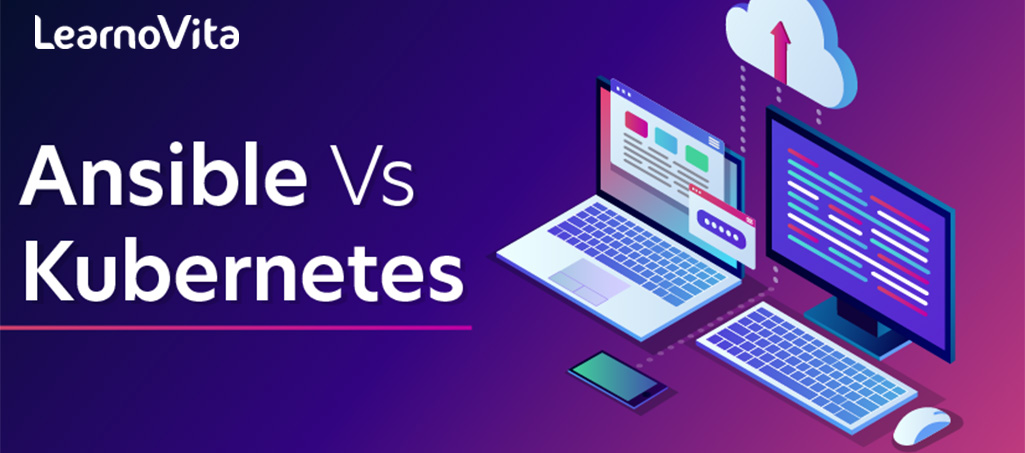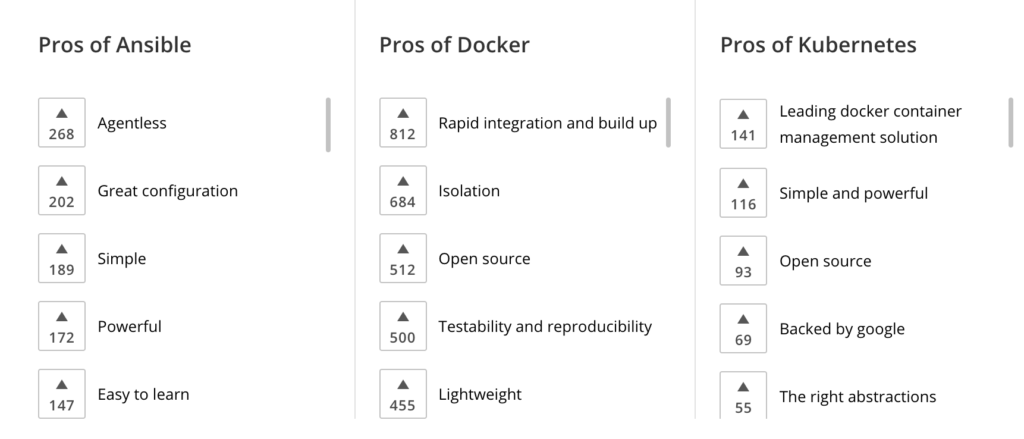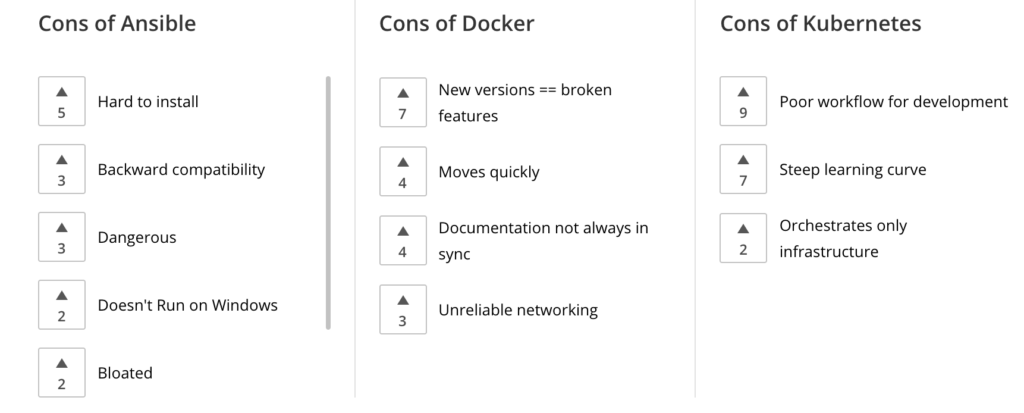- What is AWS Elastic Beanstalk? | A Complete Guide For Beginners
- What is Azure Devops? | A Comprehensive Guide
- What is Devops Engineer? | Roles and Responsibilities
- What is Blue Green Deployment? : The Ultimate Guide | Step-By-Step Process
- Introduction to Docker Images and Containers |A Definitive Guide with Best Practices [ OverView ]
- DevOps Tools for Database Deployment Automation | All you need to know [ OverView ]
- Top AWS DevOps Tools for Cloud Build and Deployment | A Complete Guide with Best Practices
- The Rise of DevOps: What It Is & How It Helps Businesses [OverView]
- Why DevOps and What it Means for Federal Agencies | How its Work [ OverView ]
- What is Chaos Engineering? : The Ultimate Guide | Principles of Chaos Engineering [ OverView ]
- Top Most DevOps Security Tools | The Ultimate Guide with Expert’s Top Picks
- What is Continuous Integration in Jenkins | A Complete Beginners Guide | REAL-TIME Examples
- Best CI/CD Tools Used by Programmers | Everything You Need to Know | Expert’s Top Picks
- Difference between Docker and Virtual Machine | A Definitive Guide and Which Should You Learn?
- Top Features of Docker | Everything You Need to Know [ OverView ]
- What is DevOps? : A Complete Guide with Best Practices
- Docker Alternatives and Their Standout Features [ OverView ]
- What is AWS DevOps ? All you need to know [ OverView ]
- Terraform vs Ansible: Key Differences Among Terraform and Ansible
- Docker vs Kubernetes | Difference You Should Know
- DevOps Build Tools List
- Ansible Vs Kubernetes
- DevOps Engineer Salary, Roles and Responsibilities
- Ansible vs. Puppet
- What is Puppet?
- Agile vs DevOps
- What is Docker Container?
- How to Install Jenkins on Windows?
- What is AWS Elastic Beanstalk? | A Complete Guide For Beginners
- What is Azure Devops? | A Comprehensive Guide
- What is Devops Engineer? | Roles and Responsibilities
- What is Blue Green Deployment? : The Ultimate Guide | Step-By-Step Process
- Introduction to Docker Images and Containers |A Definitive Guide with Best Practices [ OverView ]
- DevOps Tools for Database Deployment Automation | All you need to know [ OverView ]
- Top AWS DevOps Tools for Cloud Build and Deployment | A Complete Guide with Best Practices
- The Rise of DevOps: What It Is & How It Helps Businesses [OverView]
- Why DevOps and What it Means for Federal Agencies | How its Work [ OverView ]
- What is Chaos Engineering? : The Ultimate Guide | Principles of Chaos Engineering [ OverView ]
- Top Most DevOps Security Tools | The Ultimate Guide with Expert’s Top Picks
- What is Continuous Integration in Jenkins | A Complete Beginners Guide | REAL-TIME Examples
- Best CI/CD Tools Used by Programmers | Everything You Need to Know | Expert’s Top Picks
- Difference between Docker and Virtual Machine | A Definitive Guide and Which Should You Learn?
- Top Features of Docker | Everything You Need to Know [ OverView ]
- What is DevOps? : A Complete Guide with Best Practices
- Docker Alternatives and Their Standout Features [ OverView ]
- What is AWS DevOps ? All you need to know [ OverView ]
- Terraform vs Ansible: Key Differences Among Terraform and Ansible
- Docker vs Kubernetes | Difference You Should Know
- DevOps Build Tools List
- Ansible Vs Kubernetes
- DevOps Engineer Salary, Roles and Responsibilities
- Ansible vs. Puppet
- What is Puppet?
- Agile vs DevOps
- What is Docker Container?
- How to Install Jenkins on Windows?

Ansible Vs Kubernetes
Last updated on 04th Oct 2020, Artciles, Blog, DevOps
DevOps is the most common buzzword in the world of organizational data culture and software development. It is an operational culture that aims at continuous development and integration, and rapid IT service delivery by promoting better communication and improved collaboration between developers and operators. DevOps also seeks to make deployments easier and increases transparency between developers and operators. It also encourages infrastructure as code. The recent emergence of companies shifting to adopt DevOps rose proportionately with the rise of Cloud computing and virtual platforms due to COVID-19. While it helps to obscure the existing boundaries in the organization framework, there are many ways DevOps is proving to be resourceful. For instance, it aids in automation and monitoring of the process of software creation, which spans from integration, testing, releasing to deploying, and managing it. Further, it facilitates reducing the number of development cycles while streamlining the development and release pipeline. Currently, there are many DevOps tools (e.g., Ansible, Docker, Kubernetes) one can use for the tasks mentioned above.
Subscribe For Free Demo
Error: Contact form not found.
What is Docker?
Docker is a software container technology platform that enables its users to create, deploy, run, and manage applications within the containers. Build on Linux Containers (LxC) it gives freedom to application/infrastructure developers and IT operation teams to create virtual environments and a platform for improved innovation and collaboration. Docker containers run within the kernel of the host machine and they don’t require additional hypervisor load, so they are lightweight. In other words, Docker is what enables us to run, create and manage containers on a single operating system. Then there is Docker Swarm. Swarm turns a pool of Docker hosts into a virtual, single host. Swarm is especially useful for people who are trying to get comfortable with an orchestrated environment or who need to adhere to a simple deployment technique but also have more just one cloud environment or one particular platform to run this on. In nutshell, Docker is an open source tool that allows you to Build, Ship, and Run applications, Anywhere.
is Kubernetes?
Kubernetes is a container as a service (CaaS) project released by Google. It helps you to manage a containerized application in various types of physical, virtual, and cloud environments. If you have Docker installed on a bunch of hosts (different operating systems), you can leverage Kubernetes. These nodes , or Docker hosts , can be bare-metal servers or virtual machines. Kubernetes can then allow you to automate container provisioning, networking, load-balancing, security and scaling across all these nodes from a single command line or dashboard. Making the application(s) more scalable and making the infrastructure more robust are two best reasons for opting for multiple nodes. In other words, it is a container orchestration platform. A collection of nodes that is managed by a single Kubernetes instance is referred to as a Kubernetes cluster. Kubernetes is changing the DevOps approach to configuration management and deployment at scale.
What is Ansible?
Ansible is an open-source software solution that doesn’t depend on the typical client-server model. Ansible helps with difficult and time-consuming processes and converts them into repeatable playbooks, which increases production speed while bringing a much-needed element of simplicity. Ansible automates IT requirements such as application deployment, cloud provisioning, and container orchestration.
Key Differences
While Ansible uses Python while Docker and Kubernetes run on Go Programming. Ansible also easy to use and effective for configuration management, and Docker is easy to understand and isolate. However, Kubernetes requires well-planned efforts when it comes to defining nodes and manual installation. Ansible needs to have to run the installation and configuration programs to the servers one-by-one. This tool just manages to automate installation and configuration to all the servers. But for Kubernetes, one has to configure security and multi-host networking; attach storage; and enable monitoring, auditing, and logging. Plus, it does not have a default high availability (HA) mode.
Ansible is an excellent useful tool for front-end developers, particularly in situations where some programming is required. Kubernetes is best suited to developing larger apps, and Docker has multi-components. Kubernetes support for Windows server is under the beta phase, whereas Docker has official support for Windows 10 and Windows Server 2016 and 1709. Out of all three, Kubernetes has an excellent load balancing concept. And for Ansible, one still needs a Linux control machine to manage Windows hosts.
Difference between Ansible vs Kubernetes vs Docker
To begin with, let’s look at Ansible vs Kubernetes – which is an often confusing topic. Ansible is an IT automation tool that deploys software, configures systems, and organizes more complex IT functions such as rolling updates or continuous deployments. Ansible is an infrastructure automation engine that automates software configuration management. On the other hand, Kubernetes is a system designed to orchestrate Docker containers. In principle, Kubernetes can work with any containerization technology. It manages workloads and uses nodes to handle scheduling to make sure that their condition matches the users’ expectations.
As for the difference between Docker vs Kubernetes. Practically, Docker can run without Kubernetes and Kubernetes can function to the fullest without Docker, using both in co-op improves the functionality of each other. Here is a quick summary:
| Category | Kubernetes | Docker |
|---|---|---|
| Scaling | It offers auto-scaling. | It does not offer auto-scaling. |
| Installation | Could be difficult to install based on where you are in your DevOps Journey. | It is relatively easier to install. |
| Load-balancing | Load-balancing settings need to be configured manually. | It performs automatic load-balancing. |
| Logging and monitoring | It offers an in-built tool. | It does not offer an in-built tool. |
| Scalability | Scaling up is slow. | Scaling up is fast. |
| Tolerance ratio | It has low fault tolerance. | It has a high fault tolerance. |
| Optimization | It is optimized for numerous small clusters. | It is optimized for a single large cluster. |
| Customization | It offers more customization. | It offers relatively less customization. |
| Sharing data volume | It shares data volume with any container. | It shares data volume only with the containers in the same pod. |
Docker and Kubernetes comparison
Docker and Kubernetes are great tools for deploying applications. However, these DevOps tools by themselves do not provide a full blown automation experience. Fortunately, Ansible comes to rescue to plug any operations gaps in Docker and Kubernetes. Ansible is agentless and allows us to use SSH keys for connecting to remote machines. Ansible playbooks are written in yaml and offer inventory management in simple text files.
Top Pros Ansible vs Docker vs Kubernetes

Top Pros Ansible vs Docker vs Kubernetes
Top Cons Ansible vs Docker vs Kubernetes

Top Cons Ansible vs Docker vs Kubernetes
All of them are open source, backed by large communities of contributors, and work with many different cloud providers. The DevOps focus has now shifted to writing scalable applications that can be distributed, deployed and run effectively anywhere. Where Docker provided the first step in helping developers build, ship and run software easily, Kubernetes has helped take a giant leap by helping DevOps run containers in a cluster, manage applications across different containers and monitor them effectively as well.
DevOps tools makes IT automation simple as it ends repetitive tasks and enables faster application deployment, thus allows DevOps teams to perform more strategic work. So the bigger question is – Is it Docker vs Kubernetes vs Ansible or Docker and Kubernetes and Ansible?
How Are These Two Tools Alike?
Kubernetes and Ansible don’t have much in common. Both of them are cost-effective since they’re both open-source software. Additionally, they’re both touted as being powerful yet easy to use. Still, there’s little chance of confusing one for the other!
What Is the Major Ansible vs Kubernetes Differences?
The differences between these two products are profound. Ansible is an IT automation tool that deploys software, configures systems, and organizes more complex IT functions such as rolling updates or continuous deployments. On the other hand, Kubernetes is a system designed to orchestrate Docker containers. It manages workloads and uses nodes to handle scheduling to make sure that their condition matches the users’ expectations.
In other words, Ansible deploys changes to hosts, while Kubernetes manages containers and keeps them working properly.
Ansible is an excellent useful tool for front-end developers, particularly in situations where some programming is required. Kubernetes is best suited to developing larger apps.
Based on the properties of both tools, it’s like comparing apples to oranges. Granted, they’re both DevOps tools that handle configuration management, but the purposes for which they’re used have minimal overlap.
